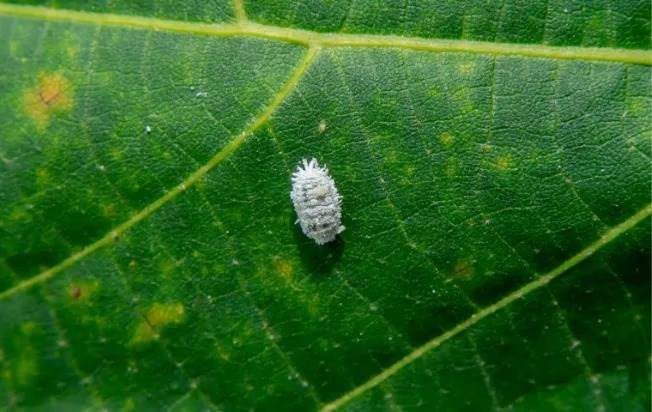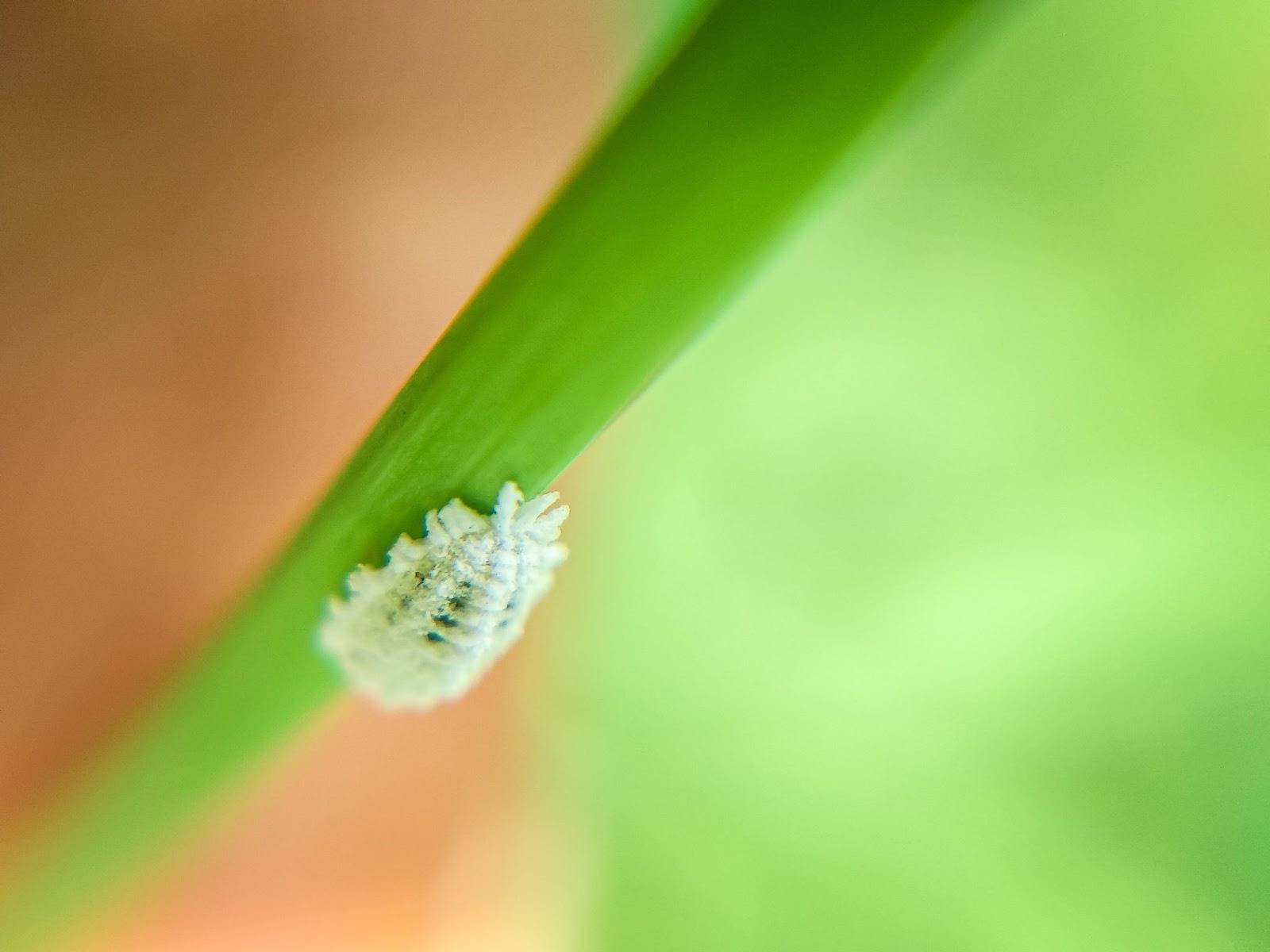
Mealybug Identification in Florida
Identifying Mealybugs in Florida

Florida's climate and abundant plant life make it a perfect environment for various pests, including mealybugs. These small, soft-bodied insects are often found on crops and ornamental plants throughout the Sunshine State.
Mealybugs pose a significant threat to Florida's agricultural industry, causing damage to plants through direct feeding, transmission of plant viruses, and secretion of honeydew, which can lead to sooty mold growth.
But you don’t have to let mealybugs take control of your garden. Below, we break down what you need to know to identify, eliminate, and prevent them from coming back.
Key Takeaways
- Mealybugs are a common pest in Florida, causing harm to crops and ornamental plants.
- You can spot them by looking for key characteristics like white, cottony, and wax-covered bodies, wings, and antennae. You might also see warning signs from your plants, like yellowing or dying leaves and the growth of sooty mold.
- You can squash mealybug infestations with proper prevention and elimination techniques. It’s also good to consult a pest control professional to stop the infestation before it grows.
What Are Mealybugs? How to Identify Them
Mealybugs are a common pest found in Florida. They belong to the family Pseudococcidae, and they're known for their distinctive white wax coating.
This waxy substance gives them their name and acts as a protective layer against predators and the environment. You can usually spot and identify mealybugs by looking for classic characteristics. Keep an eye out for these key features:
- Color: Adults are usually covered in white wax, making them appear fluffy or cottony.
- Size: Mealybugs are typically small, ranging from 1/16 to 1/8 inch in length.
- Sexual Dimorphism: This group has noticeable differences between males and females. Adult males have wings, while adult females are wingless and significantly larger.
- Antennae: Both sexes have antennae, but females have shorter and thicker ones compared to the slender antennae of males.
Signs You Have Infested Plants
If you have mealybugs on your houseplants, fruit trees, or other vegetation, the most obvious sign to look for is the bugs themselves. But you can also spot a brewing infestation by looking for indicators that your plants are being attacked, such as:
- The presence of sooty mold on your plants
- Yellowing or dying leaves
- Cottony egg masses on leaves
- A sticky substance (honeydew) on leaves
- A noticeable uptick in the ants you see on or near your plants
Common Mealybug Species in Florida
There are several species of mealybugs that you might see if you live in Florida. Some of them have unique features that make them easy to identify. Others tend to hang out in specific areas, which makes it easy to spot them.
You may need to tweak your prevention and treatment methods based on the kind of mealybug you’re dealing with, so it’s important to know what to look for. Here are a few species you might encounter:
- Citrus Mealybug (Planococcus citri): These pests are usually found on citrus plants but can also attack other ornamentals. They have a pinkish body and are covered in a powdery white wax.
- Longtailed Mealybug (Pseudococcus longispinus): Known for their long wax filaments, which can be twice the length of their bodies, longtailed mealybugs are frequently found on greenhouse plants and ornamentals.
- Madeira Mealybug (Phenacoccus madeirensis): This species has a distinct stripe-like pattern on its body. They prefer tropical and subtropical climates, making Florida an ideal environment.
Why Identifying Mealybugs Matters: Damage to Host Plants
Regardless of the kind of mealybug you encounter, one thing is certain: these pests love citrus plants. And because citrus plants are a key part of Florida’s agriculture industry, mealybugs pose a real threat to the economy and the environment.
These critters are known to infest the leaves, stems, and roots of fruit-bearing trees, feeding on the tree's vital nutrients and fluids. This feeding frenzy often results in leaf drop, stunted growth, and fruit loss.
Apart from citrus plants, mealybugs are also known to feed on indoor and outdoor ornamental plants and valuable crops like:
- Eggplants
- Tomatoes
- Peppers
- Ferns
- Orchids
- Hibiscus
These tiny invaders are usually found on the leaves and stems of the plants, laying their eggs in hard-to-reach areas. As they feed, they weaken the plant, causing yellowing and curling of leaves. Plants may lose leaves in severe infestations, and the mealybug population can multiply rapidly.
Mealybug infestations are typically characterized by the presence of a sticky substance called honeydew. We’re not talking about the fruit — we’re talking about a substance that promotes the growth of sooty mold, a black fungus that blocks sunlight from reaching leaves, hindering photosynthesis and weakening plants.
Pro Tip: Keep an eye out for ants near your plants, as they're often an indicator of mealybug presence, thanks to their love for honeydew.
-
Do mosquito control services work?
When you choose to have professional mosquito control performed on your property, you will see a dramatic reduction in the mosquito populations around your yard.
By maintaining monthly treatments, these results will continue. We are so confident in the effectiveness of our mosquito control programs that we guarantee them with free follow-up treatments if needed in-between regular services.
-
How do you control mosquitoes in the yard?
At Native Pest Management, our technicians start their mosquito control service by inspecting your landscape for standing water. We then treat the standing water we find every month with biological larvicides to prevent mosquitoes from breeding.
Then, we perform a pet safe mosquito misting of the landscape to eliminate adult mosquitoes and prevent mosquitoes from finding harborage in your landscape. This guaranteed service should last approximately 30 days.
-
Can pest control get rid of mosquitoes?
No pest control treatment will eliminate every mosquito on your property.
However, with our two-step mosquito control service, we have been told by product manufacturers to expect a 90% reduction in the mosquito population.
Since we believe in the effectiveness of our mosquito control programs, we guarantee them with free follow-up treatments if needed in-between regular services.
How Can I Prevent a Mealybug Infestation?
Proper garden care can greatly minimize the risk of mealybug infestations. Keep an eye on new growth and active mealybugs, as the nymphs can be tough to spot. Make sure to inspect your plants regularly, especially in the warmer months.
To help prevent mealybug infestations, avoid excessive use of nitrogen-rich fertilizers. These can cause rapid plant growth, which is attractive to mealybugs. Instead, opt for slow-release fertilizers or organic options.
In larger-scale agriculture, monitoring mealybug populations and understanding their life cycle is essential to managing infestations. Regular scouting, insect traps, and yellow sticky cards can help growers spot early signs of mealybugs.
Farmers can adopt various prevention practices, including:
- Careful selection of ornamentals. Opt for mealybug-resistant plant cultivars where possible.
- Crop rotation. Changing the types of crops planted can disrupt the mealybug life cycle and prevent them from multiplying.
- Sanitation. Remove plant debris and weeds in the area, which may host mealybug populations.
How to Get Rid of Mealybugs
Once you’ve identified mealybugs in or around your home, you can focus on eliminating the pest population before it grows. Keep infestations in check and minimize damage to plant life by acting quickly.
You can choose to take matters into your own hands or contact a professional pest control service. Either way, taking action sooner rather than later is important, as mealybugs are known to reproduce rapidly.
If you’d like to try to get rid of mealybugs on your own, you can use two main approaches: biological control and chemical solutions.
Biological Control
One of the most eco-friendly ways to control mealybugs is through biological control. This method uses natural predators and parasites to manage the mealybug population. Some of the primary natural enemies of mealybugs include:
- Lacewings: These critters are known for their voracious appetite for mealybugs, particularly their nymphs and eggs.
- Parasitoid Wasps: Tiny parasitic wasps, such as Anagyrus pseudococci, lay their eggs inside mealybug adults or nymphs, eventually killing them as the wasp larvae develop.
- Predatory Beetles: Ladybugs and other carnivorous beetles are effective mealybug controllers, feasting on crawlers and nymphs alike.
You can also attack mealybug colonies by reducing the ant population near their hideouts. Remember, ants are attracted to mealybugs due to the honeydew they produce. Ants often protect these pests in exchange for that sweet, sweet honeydew. Eliminating ants will help encourage natural predators to move in on the mealybugs.
Chemical Solutions
When biological control isn't enough or infestations are severe, chemical control may be necessary. Some common chemical solutions include:
- Insecticidal Soap: This relatively mild approach can be effective against crawlers and nymphs. Insecticidal soap mixes water and potassium salts from fatty acids to kill pests. It won’t harm your plants but will eat at the mealybugs’ exoskeletons and cause dehydration. You can make your own soap at home with one tablespoon of soap, one cup of cooking oil, and a bit of water. Shake it in a spray bottle, then thoroughly apply it to the affected areas.
- Systemic Insecticides: These chemicals are absorbed by plants and help protect them from mealybugs feeding on their sap. Systemic insecticides can be applied as a soil drench or granules. However, they can also harm beneficial insects, so use them mindfully.
- Contact Insecticides: You can apply these products directly to mealybugs to kill them on contact. Some popular choices include pyrethroids, neonicotinoids, and organophosphates.
No matter what kind of chemical or pesticide you use, make sure you carefully follow all instructions that come with your product.
When to Contact Pest Control Professionals
When all else fails, or your mealybug infestation worsens, it’s time to call in professional pest control services. At Native Pest Management, we employ pest-friendly and environmentally-conscious pest control techniques to curb infestations without harming your plants.
We’ll help you figure out why mealybugs are setting up shop in your garden and work to eliminate them quickly and effectively.
Give us a call today to learn more about how we can help you.

Why Choose Native Pest Management?
We Exceed Customer Expectations
-
Pet Friendly & Environmentally ConsciousNative Pest Management applies our pest control products with the safety of your family and pets in mind! We also offer eco-friendly pest control to protect your family and the planet.
-
Local Service ProfessionalsSince 2015, we have served communities in West Palm Beach and all throughout South Florida. Our team is fully licensed, insured, and vetted.
-
On TimeOur team will not only arrive on time, but they’ll also go above and beyond when providing service. It’s what makes us one of the top rated pest control companies in Florida! We strive for complete customer satisfaction every time.
-
Get a 100% Free Estimate
Whether you currently have pests in your home or simply want to start professional pest prevention, take the first step to a pest-free life, and contact us today for your free pet-friendly pest control quote.
-
“Warren took his time with the servicing and was very knowledgeable! Exceptional customer service. I will be requesting him each time.”- Montiea Singletary
-
“Excellent service by Chino from Native Pest Management. Chino went above and beyond to make sure we understood everything about the service and kept us very informed during the process.”- Brand Gonzalez
-
“Truly professionals at what they do. very respectful very knowledgeable and great attitude.”- Jorge Acosta
-
“I called and spoke to the manager, who was polite and courteous, and even though it cost them money to come back out and spray, they did not charge me again, and I was very thankful.”- S. Williams
-
“Dale is the absolute best in the business of pests! My sister and I personally ask for him every single time because he always goes above and beyond.”- Zariah Graham
-
“The technician was very professional. He explained things thoroughly and put me at ease with what was about to happen in my home.”- Anthony Diaz
-
“Native pest management always exceeds my expectations! The people who answer the phone are so nice and accommodating and make scheduling a breeze! The techs are always so nice and do a great job.”- Michelle Cato
-
“Extremely impressed with the technicians I met today. Tony and Jamie. Very thorough and customer oriented. I am expecting great things for my trees and plants.”- Curt Kredo

Native Pest Management's Blog
Want all the latest news or updates? Browse through our blog to read our most recent posts and featured articles.








